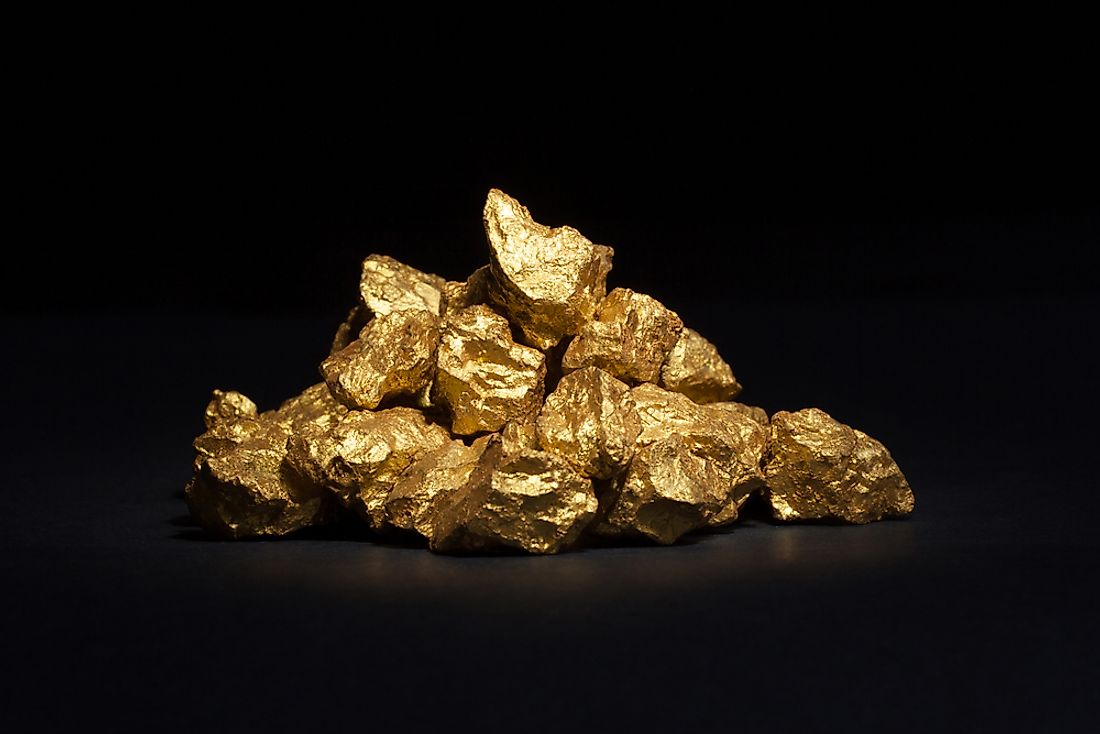What Is the World's Biggest Gold Nugget?

By definition, gold nuggets are gold pieces which occur naturally. The nuggets come in different purity levels, but most have purities close to that seen in pure refined gold (generally between 83% and 92% purity). The purity of a gold nugget is established through assessment of its color and fineness, where the depth of the golden color in a nugget is directly proportionate to its purity. Concerning fineness, purer gold nuggets have more parts per thousand, with the unit of finesses being “fine.” Taking an example of a nugget with a fineness of “860 fine”; this means it is 860 parts per 1000 in gold. The most usual impurities which compromise the purity of gold nuggets are copper and silver.
Historic Large Nuggets
There are numerous gold nuggets found around the world, some of which are of impressive size. Many of the large gold nuggets have been discovered in Australia, California, and South America. The largest gold nugget ever discovered in history was the “Welcome Stranger” nugget which weighed an astonishing 173 pounds. The nugget, which was discovered in Victoria, Australia, was, however, later smelted soon after its discovery in the mid-19th century, producing a net weight of 156.6 pounds in pure gold. Other large gold nuggets have been discovered, but none exceeds the “Welcome Stranger” in size. One nugget, however, does come close in weight, the “Welcome Nugget.” Also discovered in Australia in the mid-19th century, the “Welcome Nugget” weighed 152 pounds. The nugget was also later smelted in 1859 in London. While being the largest gold nuggets ever discovered, the two nuggets are no longer in existence, as they were both melted down.
Modern-day Large Nuggets
Currently, the title of the world’s largest gold nugget is held by the “Pepita Canaa” nugget. The nugget weighed 134.1 pounds in gross weight and is estimated to have 115.37 pounds of pure gold. Also known as the Canaa Nugget, the Pepita Canaa was discovered in a mine in the Serra Pelada region in Brazil’s Para State. The discovery of the immense gold nugget was made by gold miners in September 1983 and is often thought to have been, but a fragment of a larger nugget believed to weigh as much as 363 pounds. The Pepita Canaa is displayed in Brazil’s Banco Central Museum, where it is exhibited next to other large nuggets also discovered in Serra Pelada mines, including the second- and third- largest nuggets in the world, weighing 103.28 pounds and 95.54 pounds respectively. Victoria, Australia is home to the world’s largest gold nugget discovered through the use of a metal detector; the “Hand of Faith,” a nugget weighing 60 pounds. The big gold nugget was discovered in 1980.
Formation
Placer mining is the most popular way in which gold nuggets have been obtained, a fact made possible through the action of watercourses which deposit fine gold in the form of a placer. The weathering of lodes and veins having gold also results in the formation of gold nuggets. The dredges used in gold mining leave behind tailing piles, in which gold nuggets have been found.











